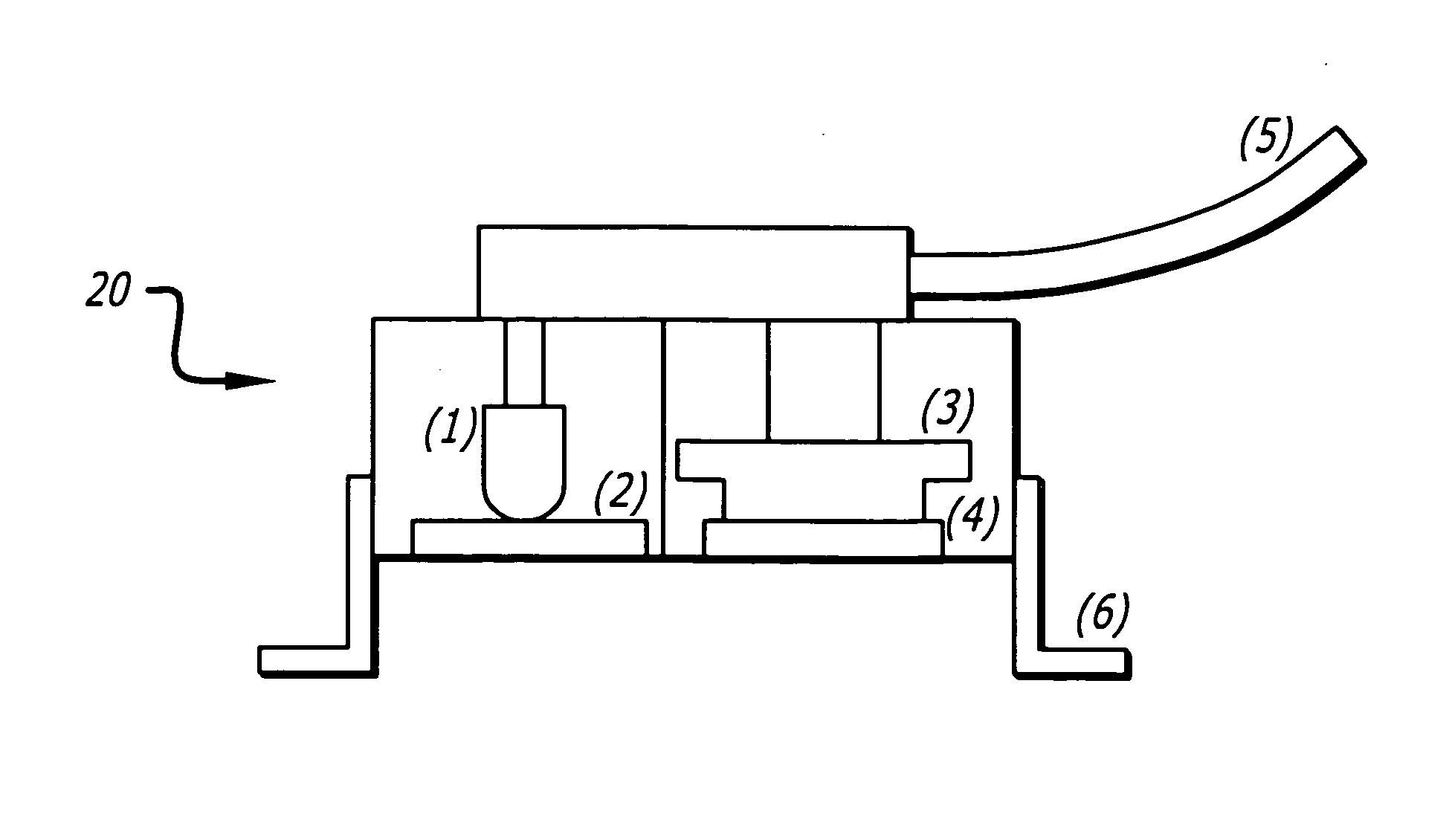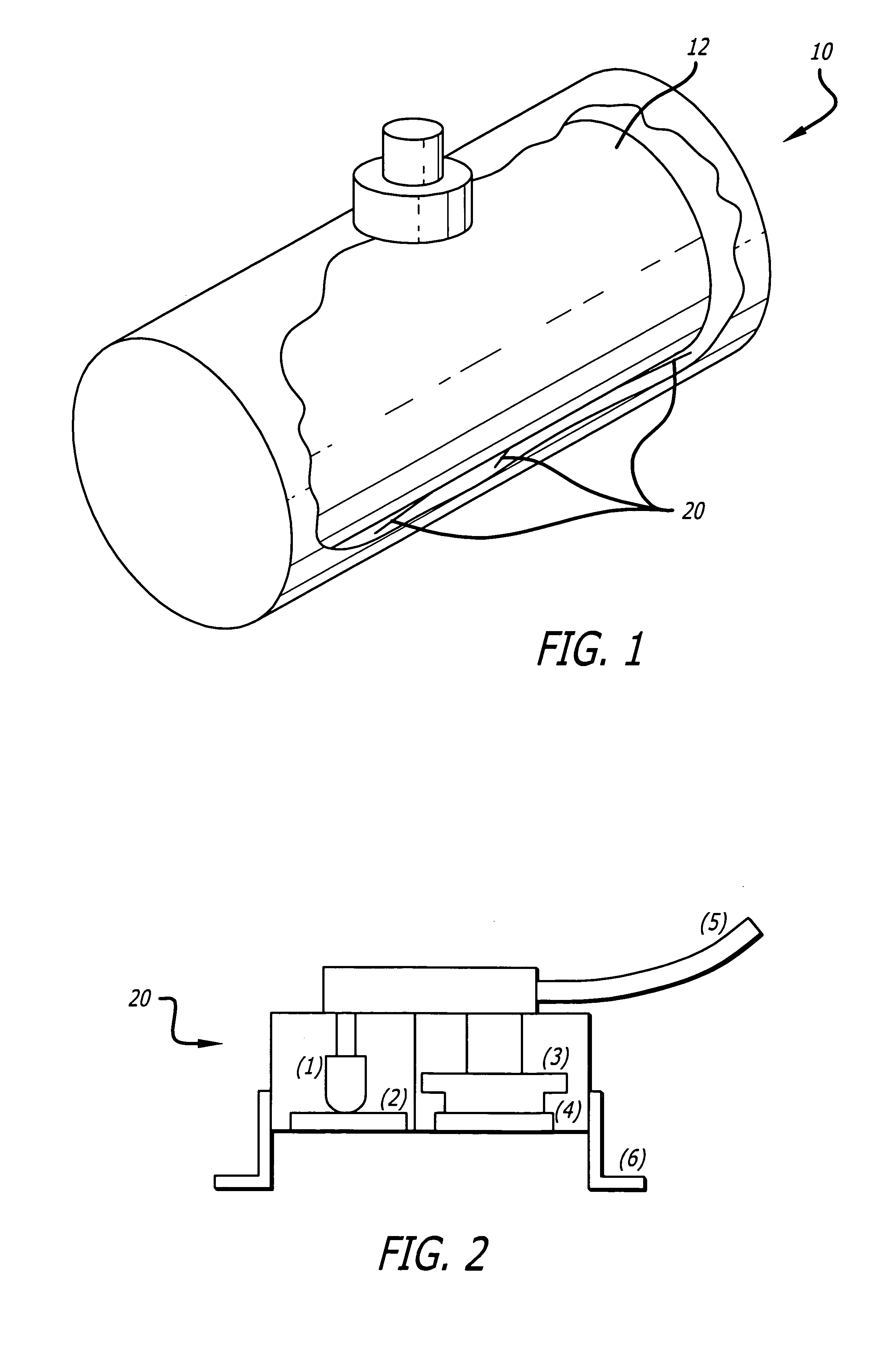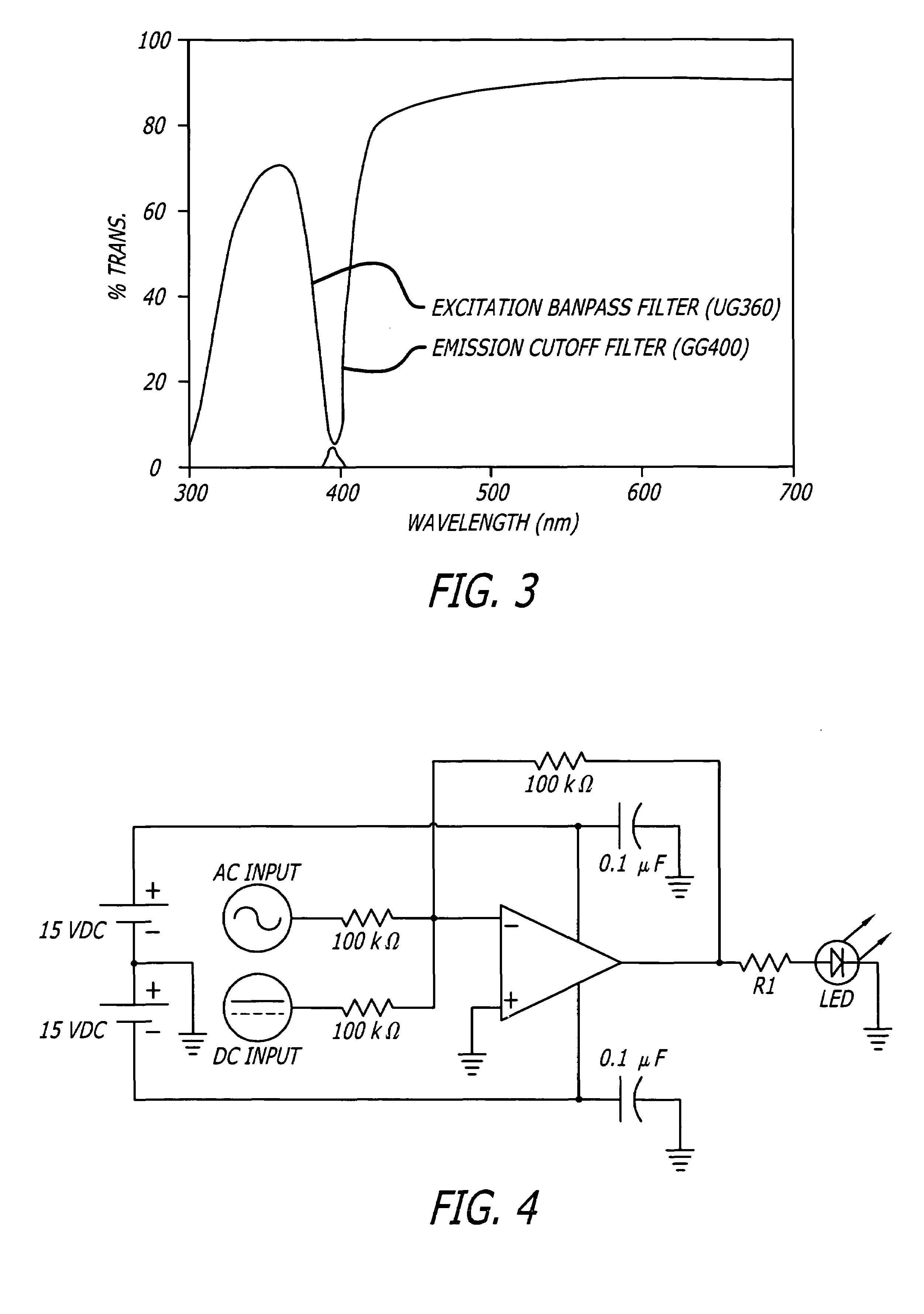System and method for optical detection of petroleum and other products in an environment
a technology of optical detection and petroleum, applied in the field of system and method for optical detection of petroleum and other products in an environment, can solve the problems of increasing the optical detection system cannot distinguish the difference between aqueous and non-aqueous media through the use of conductivity sensors, and the dynamic expansion or contraction of the stored product, so as to reduce the cost and complexity of the sensor, and reduce the effect of false alarms
- Summary
- Abstract
- Description
- Claims
- Application Information
AI Technical Summary
Benefits of technology
Problems solved by technology
Method used
Image
Examples
Embodiment Construction
[0027]Reference will now be made in detail to an exemplary embodiment of the present invention, an example which is illustrated in the accompanying drawing (FIGS. 1–12).
[0028]Optimal detection parameters are determined for several selected petroleum materials commonly found in underground and aboveground tanks (gasoline, fuel oils etc.) generally depicted as 12. Appropriate excitation and emission wavelengths are then selected for detecting specific petroleum based materials. The emission wavelengths generally vary depending on the petroleum product (in some cases these wavelengths are between 400 and 600 nm). In one aspect of the present invention, the excitation wavelengths may be in the ultra-violet region (e.g., 300–400 nm region) but may vary depending on the product to be detected. This information is used to determine off-the-shelf and customized devices for detecting petroleum liquid releases from the tank 12. The system of the present invention utilizes relatively inexpensi...
PUM
| Property | Measurement | Unit |
|---|---|---|
| frequency | aaaaa | aaaaa |
| frequency | aaaaa | aaaaa |
| volume | aaaaa | aaaaa |
Abstract
Description
Claims
Application Information
 Login to View More
Login to View More - R&D
- Intellectual Property
- Life Sciences
- Materials
- Tech Scout
- Unparalleled Data Quality
- Higher Quality Content
- 60% Fewer Hallucinations
Browse by: Latest US Patents, China's latest patents, Technical Efficacy Thesaurus, Application Domain, Technology Topic, Popular Technical Reports.
© 2025 PatSnap. All rights reserved.Legal|Privacy policy|Modern Slavery Act Transparency Statement|Sitemap|About US| Contact US: help@patsnap.com



